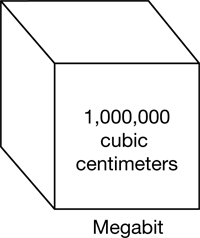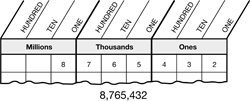Students develop flexibility composing and decomposing big numbers based on place value concepts. They use representations of base-ten pieces (shorthand and Base-Ten Pieces Recording Sheets) and hops on number lines. Students also construct proportional base-ten models for ten thousand, one hundred thousand, and one million based on the familiar size and shape relationships of base-ten pieces. These conceptual models help students visualize the powers of ten patterns in our place value system.
Content in this Lesson
- Reading and writing large numbers (to the millions) [E1].
- Comparing and ordering large number numbers (to the millions) [E2].
- Representing large numbers (to the millions) using place value charts, number lines, and number sentences (e.g., 10,705 = 10,000 + 700 + 5) [E3].
- Making connections between place value concepts and representations of numbers (to one million) with base-ten pieces, number lines, expanded form, and standard form [E4].
- Recognizing that different partitions of the same number are equal (e.g., 10,000 + 700 + 5 = 10,000 + 600 + 90 + 15) [E3].
- Solving division problems involving zero and justifying solutions [E8].
- Recognizing the relationships in the place value of multidigit whole numbers [E4].
Daily Practice and Problems A–D
Assessment in this Lesson
| Assessment | Expectation Assessed |
|---|---|
|
Big Base-Ten Pieces |
|
|
Draw, Place, and Read, |
|
|
DPP Item I |
|


















